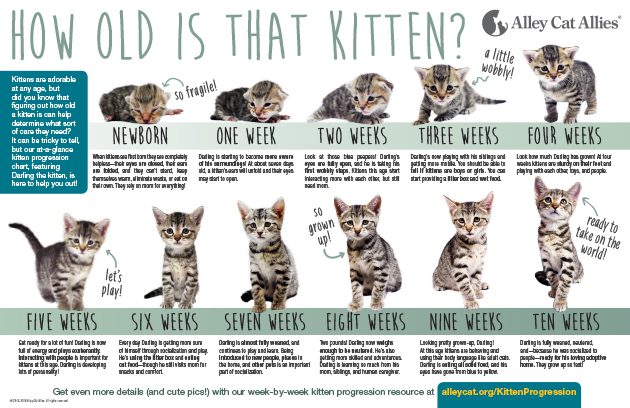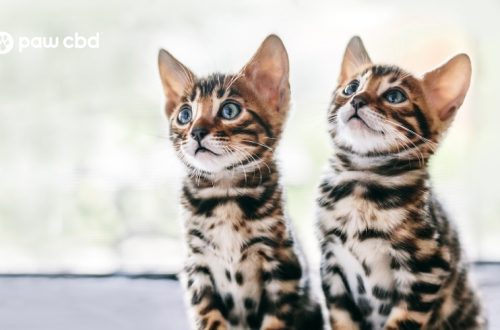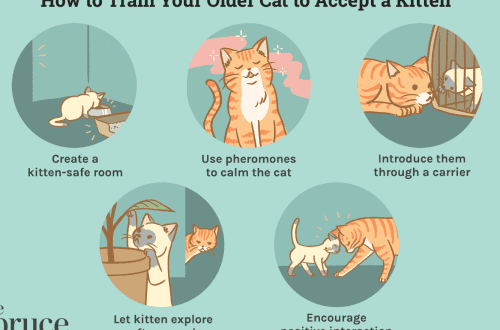
ਬਿੱਲੀ ਦੇ ਬੱਚੇ ਕਿਵੇਂ ਵਧਦੇ ਹਨ ਅਤੇ ਵਿਕਾਸ ਕਰਦੇ ਹਨ
A lot of interesting things happen in the first year of a pet’s life. It’s hard to believe that a tiny meowing lump that fits in the palm of your hand can grow into a full-fledged adult cat in just twelve months.
A typical kitten growth chart shows that the most significant—and most striking—changes occur during the first eight weeks. Familiarity with the periods of development of kittens will help to better understand what and at what age they may need. How do kittens develop week by week?
ਸਮੱਗਰੀ
1-3 weeks: kittens open their eyes and ears
Pets are born with their eyes and ears closed. In the first week of their life, they remain blind and deaf. The kittens’ eyes open in the second week, but at that time their eyesight is not very good, so they should be kept away from bright light, according to The Spruce Pets. By the third week, the blue eyes that kittens are born with may begin to change color. At the same time, their ear canals and auricles open, revealing to them a whole new world full of sounds.
Kittens can make sounds from birth: they squeak softly when they want to tell their mother that they are hungry, writes Catster. Purring usually begins in the third week, and in general, the number of sounds made by babies increases when they begin to walk, play and explore the world around them.
3 – 5 weeks: kittens learn to walk and use the litter box
Usually at the age of about three weeks, fluffy balls begin to take their first unsteady steps. At first they are shaky and timid, but as the balance improves during the fourth week, the kittens become more confident and rush to new discoveries. At this time, you should secure the house for the pet.
During the fourth and fifth weeks, the kittens learn to maintain sufficient balance to go to the toilet without the help of their mother. At this time, you should introduce the kitten to the tray. Usually, babies begin to understand what to do by watching a mother cat. All that is required from the owner is to show the kitten a tray. The baby is still just learning, so at first, “incidents” can happen periodically
By the age of five weeks, the kitten is already quite confident in his newfound mobility. He becomes curious and playful. This is a great time to start socializing him. It is necessary to play with the baby and stroke it, introduce it to other people and pets. You should also allow him to explore the world around him under close supervision and learn new situations, sounds and smells – all this will not only prepare him for moving to his future permanent home, but also help him grow into an emotionally healthy and balanced adult cat.
At this time, the pet should be taken for the first examination to the veterinarian. The first vaccinations should be given to a kitten between six and eight weeks of age. Major diseases that should be vaccinated first include distemper and respiratory diseases, feline viral rhinotracheitis and feline calicivirus. The veterinarian will draw up a further vaccination and revaccination schedule for the kitten. He will also discuss any additional vaccinations against dangerous diseases, including chlamydia and feline leukemia. By the age of twelve weeks, a furry baby can get his first rabies shot.
Cats, like humans, change their teeth. A kitten’s milk teeth appear in the second week, and by about eight weeks of age, all temporary teeth should already have grown. By four months, permanent teeth will begin to sprout.
9-12 weeks: weaning and basic skills training
Kittens can be started on solid foods as early as the fifth week, but they will continue to feed on mother’s milk for a few more weeks. It is recommended to feed a pregnant and lactating mother cat with the same food for kittens. The high content of proteins and fats there will help her recover faster and stay healthy. By the ninth week, the kittens will have completed their transition to solid food, and after that they should be fed quality kitten food.
The volume and frequency of feeding will depend on what kind of food the owner chooses: canned or dry. Canned food should be given in small portions four to six times a day until kittens are three months old, after which the number of feedings should be reduced to three times a day, writes the Cornell Feline Health Center. When the babies are six months old, they can be transferred to two meals a day. If you give kittens dry food, you can simply leave a bowl of food freely available so that they can freely approach it whenever they are hungry. In this case, it is necessary to monitor the weight of the babies to make sure they do not overeat.
In between eating and sleeping, kittens that are only a few weeks old are learning one important thing: to be full grown cats. The Spruce Pets notes that small pets should be raised by their mother or foster cat, who will teach them the basics of hunting, socializing and playing with other cats and using the litter box.
3 – 6 months: Kittens are ready for adoption and spaying
Babies should not be taken away from their mother and litter siblings until fully weaned and trained in the basics of socialization. According to Petful, kittens continue to learn feline behavior from their mother until the tenth week. To ensure that each kitten has the best chance of becoming a well-mannered cat, it is preferable to wait at least ten weeks before giving it to a new home. You can wait even twelve weeks for the kitten to have time to go through the next important stage of vaccination.
Babies are ready for castration or sterilization by about six months of age. However, many veterinarians perform the procedure as early as eight weeks of age if the kitten weighs enough to tolerate general anesthesia.
How kittens grow and when they become adults
By its first birthday, a kitten ceases to be a kitten and is considered an adult cat. Despite the fact that a grown pet may still behave like a baby and not be fully mature, he is ready to switch to high-quality adult cat food. It is important to strictly follow the recommendations given on the packaging of the new food in order to correctly determine the volume and frequency of feeding.
Features of the development of kittens suggest that by the year they become adults. In practice, however, their adolescence usually lasts until about eighteen months. During this time, the cat may still display the energy and playfulness of a kitten, as well as typical “adolescent” behaviors, which may include boundary checking and protests such as furniture scratching or territory marking. According to the Raising Happy Kittens Physical Development Chart, the kitten may become less affectionate at this time. But don’t worry. Usually, by the age of one and a half, cats begin to mature and calm down, and by the second birthday, the formation of their adult personality is finally completed.
Watching a kitten transform from a tiny baby into an adult cat is a real miracle. And if you know what to expect as he grows up, you can help your furry friend grow up healthy and happy.
ਇਹ ਵੀ ਵੇਖੋ:
ਤੁਹਾਡੀ ਬਿੱਲੀ ਦੇ ਬੱਚੇ ਨੂੰ ਕਿਵੇਂ ਸਮਝਣਾ ਹੈ ਕਿ ਮੇਰੀ ਬਿੱਲੀ ਦਾ ਬੱਚਾ ਹਰ ਚੀਜ਼ ਨੂੰ ਖੁਰਚਦਾ ਹੈ ਤੁਹਾਡੇ ਬਿੱਲੀ ਦੇ ਬੱਚੇ ਵਿੱਚ ਸਿਹਤ ਦੀਆਂ ਸਮੱਸਿਆਵਾਂ ਨੂੰ ਘਰ ਵਿੱਚ ਲਿਆਉਣਾ





